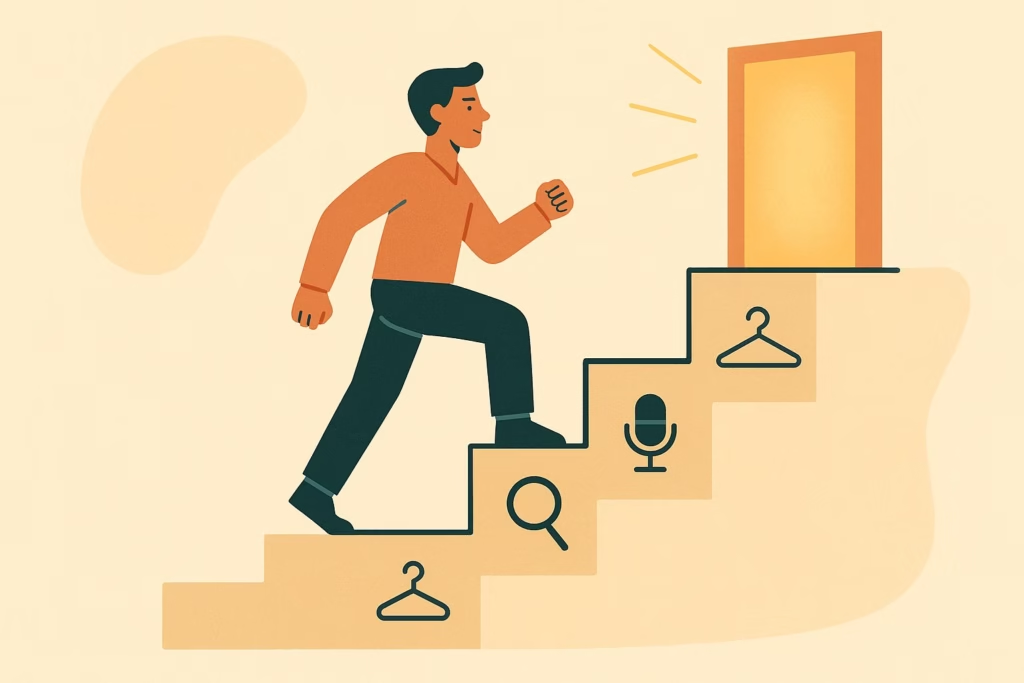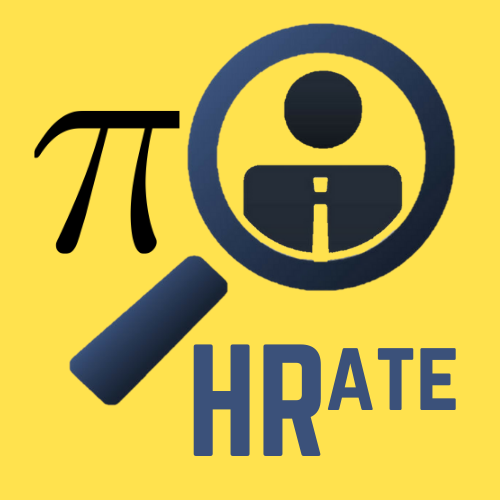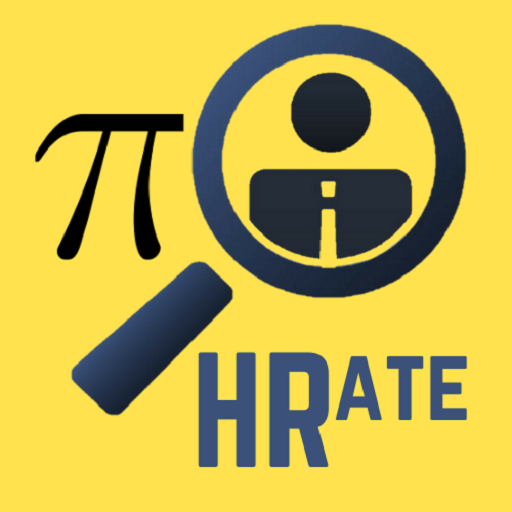The Ultimate Pre-Interview Checklist: Your Step-by-Step Guide to Acing Your Next Opportunity

Landing an interview is a triumph in itself, a clear signal that your resume stood out from the crowd. But the real game begins before you step into that virtual or physical interview room. The hours and days leading up to the interview are your golden window to transform from a promising candidate into the undeniable choice. Forget last-minute jitters, frantic searches for information, or wardrobe crises. This ultimate pre-interview checklist is your comprehensive, step-by-step guide to ensure you’re not just ready, but truly ready to impress. We’ll cover everything from deep-diving into company culture and mastering common questions to perfecting your look and packing your essentials. Let’s turn that upcoming interview into your next big career leap.

Phase 1: The Deep Dive – Unearthing Company and Role Insights
This isn’t just about glancing at the “About Us” page; it’s about becoming a temporary expert. Comprehensive research is the bedrock of confidence and allows you to tailor your responses and questions effectively.
1. Company Culture & Values: Beyond the Brochure
Delve into their mission statement, core values, and public-facing messages. Look at recent press releases, company blog posts, and their social media presence (LinkedIn, Twitter, Glassdoor, etc.).
- What kind of work environment do they cultivate? Is it fast-paced, collaborative, innovation-driven, or more traditional?
- Do they emphasize specific principles? Some companies, like Amazon with its Leadership Principles, have very defined cultural tenets. Understanding these allows you to weave them into your answers.
- Employee Reviews: Sites like Glassdoor, Indeed, and Comparably can offer candid insights into the day-to-day culture. Look for common themes, both positive and negative, to get a balanced view.
- Community Involvement: Does the company engage in corporate social responsibility (CSR) initiatives? This can reflect their values and appeal to candidates who prioritize social impact.
Why it matters: This research helps you assess cultural fit, which is as important as skill fit. It also provides invaluable context for tailoring your behavioral answers, demonstrating that you understand and align with their ethos.
2. The Product/Service Landscape: Knowing Their Business Inside Out
Understand what they sell or offer. This seems obvious, but many candidates only have a surface-level understanding.
- How does it work? If it’s a product, try it out. If it’s a service, understand the user journey.
- Who are their target customers? What problems do they solve for these customers?
- What are their key features or benefits? How do they differentiate from competitors?
- Recent Innovations/Challenges: Have they launched new products? Are there any public challenges they are addressing (e.g., market shifts, new regulations)?
Why it matters: Being able to discuss their offerings intelligently shows genuine interest and helps you speak their language. It enables you to frame your contributions in terms of how you can help them achieve their business goals.
3. Recent News & Industry Trends: Demonstrating Strategic Awareness
Go beyond the basics. What’s been happening with the company recently? What about the broader industry?
- Company News: Look for recent announcements, mergers, acquisitions, financial reports, major partnerships, or industry awards. Google News, their official newsroom, and reputable business publications are your friends.
- Industry Trends: How is the industry evolving? What are the major disruptors or innovations? How is your target company positioned within these trends? This shows you think strategically and are aware of the external environment.
- Key Figures: Know the CEO, relevant department heads, and potentially your potential manager (if easily identifiable on LinkedIn). Understanding their background or public statements can be insightful.
Why it matters: Discussing current events or industry trends related to the company shows proactivity, intellectual curiosity, and a forward-thinking mindset. It helps you stand out as someone who is invested in their success, not just their paycheck.
4. The Specific Role – Beyond the Job Description’s Bullet Points
Deconstruct the job description thoroughly. Each bullet point is a hint about what they value.
- Key Responsibilities & Deliverables: For each responsibility, think about a specific instance where you performed a similar task or achieved a similar result.
- Required Skills & Qualifications: Map your skills to theirs. Be honest about any gaps. If there are gaps, think about how you might address them (e.g., “While I haven’t directly used X software, my experience with Y software has given me a strong foundation in similar systems, and I’m a quick learner”).
- Team & Reporting Structure: If possible, use LinkedIn to research the team you’d be joining and your potential manager. This can give you clues about their professional backgrounds, career paths within the company, and even shared connections.
Why it matters: This granular understanding allows you to tailor your resume and interview answers precisely, ensuring your experience directly addresses their needs. It shows you’re not just applying for “a job” but this job.
5. Competitor Analysis: Understanding Their Place in the Market
Identify the company’s main rivals. What are their strengths and weaknesses compared to your target company?
- Market Positioning: How does your target company differentiate itself? Is it price, innovation, customer service, niche focus?
- Recent Moves: Have competitors recently launched new products or entered new markets?
Why it matters: This foresight enables you to discuss their unique selling points intelligently and demonstrates a broader business acumen. It shows you’re thinking about their strategic challenges and opportunities.

Phase 2: Mastering the Message – Practicing Your Responses
Practice doesn’t make perfect; it makes permanent. Practice the right way, focusing on clarity, conciseness, and impact.
1. Behavioral Questions: The STAR Method is King
These questions are designed to assess your past behavior as an indicator of future performance. “Tell me about a time when…”, “Describe a situation where…”. The STAR method is your indispensable tool:
- S – Situation: Briefly set the scene. What was the context or challenge? (e.g., “During my time as a Project Manager at Company X, we were facing a tight deadline on the launch of our new software platform.”)
- T – Task: Explain your specific responsibility or the goal you needed to achieve within that situation. (e.g., “My task was to ensure all client-facing documentation was finalized and approved within two weeks, despite unforeseen technical delays.”)
- A – Action: Detail your specific actions. What did YOU do? Use “I” not “we.” Be precise and actionable. (e.g., “I immediately initiated daily stand-up meetings with the development and QA teams to identify bottlenecks, then re-prioritized tasks, and personally drafted key sections of the documentation to accelerate the process.”)
- R – Result: Quantify the outcome of your actions. What was achieved? What did you learn? (e.g., “As a result, we not only met the deadline, launching the platform successfully, but also received positive feedback from clients on the clarity of the documentation. I learned the importance of proactive communication and agile adaptation in crisis management.”)
Pro-Tip: Prepare 10-15 solid STAR stories. Aim for variety, demonstrating skills like: leadership, problem-solving, teamwork, dealing with conflict, handling failure, managing success, innovation, initiative, attention to detail, and customer focus. Tailor these stories to align with the company’s stated values or leadership principles if they have them.
2. Technical/Situational Questions: Show Your Thought Process
- Technical (for tech roles): Review fundamental data structures, algorithms, system design principles, and specific technologies mentioned in the job description. Practice coding problems on platforms like LeetCode, HackerRank, or a whiteboard. Be ready to explain your thought process out loud.
- Situational (“What would you do if…?”): These assess your critical thinking and problem-solving skills. Don’t just give an answer; walk them through your approach:
- Identify the core problem/goal.
- Brainstorm potential options or solutions.
- Evaluate the pros and cons of each.
- Choose the best solution and explain why.
- Anticipate potential challenges and how you’d mitigate them.
3. The “Why Us?” and “Why You?” Questions: Your Core Narrative
- “Why this company?”: This is where your company research shines. Connect their mission, values, products, or recent achievements to your personal career goals and values. Be specific and avoid generic flattery. (e.g., “I’ve been following [Company X’s] work in [specific area], particularly your recent [achievement/product]. Your commitment to [value] deeply resonates with my own professional philosophy, and I believe my skills in [your relevant skill] can directly contribute to your continued success in [area].”)
- “Why this role?”: Link your skills, experiences, and career aspirations directly to the job responsibilities. Show genuine enthusiasm for the day-to-day tasks and the challenges.
- “Why you?”: This is your succinct elevator pitch. Summarize your unique selling proposition – what combination of skills, experience, and personality makes you the absolute best fit for this role and company? Highlight 2-3 key strengths relevant to the position.
4. Your Questions for Them: A Two-Way Street
This is arguably one of the most important parts of the interview. Prepare 3-5 insightful questions that demonstrate your research, critical thinking, and genuine interest. Avoid questions easily found on their website or those focused solely on benefits.
- “What are the biggest challenges facing this team/department in the next 6-12 months?”
- “How does success in this role typically look in the first 30, 60, and 90 days?”
- “Can you tell me about the team’s typical collaboration style and communication norms?”
- “What opportunities are there for professional development and continued learning within this role or team?”
- “How has the company culture evolved over time, and what do you personally appreciate most about working here?”
- “Given what we’ve discussed about my experience, do you have any concerns about my fit for this role that I could address?” (A bold question, but can show confidence and proactive problem-solving.)
Why it matters: Asking thoughtful questions shows engagement, initiative, and that you’re evaluating them as much as they’re evaluating you. It demonstrates that you’re thinking long-term about your fit and contribution.
5. Mock Interviews: Practice Makes Poise
The best way to refine your delivery. Practice aloud, not just in your head. Ideally, conduct mock interviews with:
- A friend or family member: Even if they don’t know the industry, they can provide feedback on your clarity, confidence, and non-verbal cues.
- A mentor or colleague: Someone with experience in your field can give more specific feedback on technical or industry-specific responses.
- A professional coach: If it’s a high-stakes interview, an interview coach can provide targeted feedback and simulated environments.
Pro-Tip: Record yourself! You’ll be surprised what you notice about your pacing, filler words, body language, and vocal tone. This is invaluable for self-correction.
Phase 3: The Presentation – Crafting Your Look
Your appearance is your first non-verbal communication. It conveys professionalism, attention to detail, and respect for the opportunity. This phase should be completed the day before the interview.
1. Dress Code Research: Decode the Company Vibe
What’s the typical dress code for employees at the company or in that specific department? This varies widely across industries (tech vs. finance vs. creative). Look for clues:
- Company Website/Social Media: Look at photos of employees.
- LinkedIn: Check profile pictures of current employees in similar roles.
- Recruiter: When in doubt, it’s perfectly acceptable to ask the recruiter, “What’s the typical dress code for interviews?”
General Rule: When in doubt, err on the side of slightly more formal than you think. It’s always better to be a bit overdressed than underdressed.
2. Outfit Selection & Preparation (The Day Before!)
- Clean and Pressed: Ensure your chosen outfit is spotlessly clean, free of stains, and wrinkle-free. Iron or steam it the day before.
- Comfort is Key: Choose something you can sit comfortably in for an hour or more. Avoid anything too tight, too loose, or made of scratchy fabric. Discomfort can distract you.
- Color Palette: Neutrals like navy, charcoal gray, black, white, and cream are safe and professional. A subtle pop of color in a tie, scarf, or blouse can add personality without being distracting. Avoid overly bright colors or busy patterns.
- Fit: Ensure clothes fit well. Ill-fitting clothes can look sloppy, regardless of how expensive they are.
- Shoes: Clean, polished, and comfortable. For in-person interviews, avoid open-toed shoes or overly casual sneakers.
- Accessories: Minimalist is best. No noisy jewelry (bangles, dangling earrings that hit microphones), excessive perfume/cologne (some people are sensitive), or distracting hats.
3. Hair & Grooming: Polished and Professional
- Hair: Neat, tidy, and out of your face. If it’s long, consider tying it back.
- Personal Hygiene: Freshly showered, clean nails.
- Makeup/Facial Hair: If applicable, opt for a natural, subtle look. Facial hair should be neatly trimmed.
4. Virtual Interview Considerations: Framing Your Space
- Dress Fully: Even if only your top half is visible, dress as if it were an in-person interview. You might need to stand up, and it helps you feel more professional.
- Solid Colors/Simple Patterns: Avoid busy patterns that can create an optical illusion or be distracting on camera.
- Lighting: Ensure good, even lighting on your face. Avoid backlighting (light source behind you) which will put you in shadow. Natural light from a window in front of you is ideal.
- Background: Choose a clean, professional, and clutter-free background. A plain wall is perfect. Avoid busy shelves, unmade beds, or distracting posters. If using a virtual background, ensure it’s high-quality and doesn’t flicker around your edges.
Phase 4: The Logistics & Essentials – Packing Your Success Bag (or Setting Up Your Success Station)
Don’t leave anything to chance on interview day. Having your practical needs covered frees your mind to focus on the conversation.
1. For In-Person Interviews: Your Interviewer’s Toolkit
- Physical Copy of Resume(s): Bring 3-5 neatly printed copies on good quality paper (e.g., resume paper). Interviewers might not have your resume handy.
- Portfolio (if applicable): If your role requires it (design, writing, sales), ensure your portfolio is updated, organized, and easily accessible.
- Notepad & Pen: For taking notes. This shows engagement and helps you remember key details for your thank-you notes. Choose a professional-looking pad.
- List of Questions for Them: Don’t rely solely on memory. Write them down clearly in your notepad.
- References (Optional but good to have): Have a separate, neatly typed list of 3-5 professional references with their contact information, just in case they ask (though they often request this later).
- Directions & Parking Plan: Know exactly how to get there and where to park. Use a GPS but also have a backup route. Allow ample extra time for traffic, getting lost, or unexpected delays. Aim to arrive at the building 10-15 minutes early.
- Snack & Water: A small, non-messy snack (e.g., a granola bar) and a bottle of water can be lifesavers if interviews run long or you get delayed. Prevent stomach rumbling!
- Breath Mints: Essential for fresh breath. Avoid chewing gum.
- Small Mirror: For a quick last-minute check before you walk in.
- Phone (on silent): For navigation or emergencies only. Put it on silent/do not disturb and tuck it away before entering the building.
- Charger/Power Bank: If you have a long day of interviews or travel.
- Identification: Driver’s license or other photo ID, as some buildings require it for visitor badges.
2. For Virtual Interviews: Optimizing Your Digital Presence
- Test Your Technology: This is paramount.
Webcam: Is it clear? Is it at eye level?
Microphone: Is it working? Does it pick up your voice clearly without echoing or static?
Internet Connection: Is it stable? Consider a wired connection if possible.
Do a test run with a friend or colleague on the exact platform you’ll be using (Zoom, Google Meet, Microsoft Teams, etc.). - Choose a Quiet, Professional Space: Minimize noise and distractions. Inform housemates, put pets in another room, turn off all notifications on your computer and phone.
- Backup Plan: Have the recruiter’s phone number handy in case of technical difficulties. Know how to quickly join via phone if your video connection fails.
- Water Bottle: Keep it within reach to stay hydrated.
- Notes: Have your prepared notes and questions easily accessible, but not directly in view of the camera. Avoid reading directly; use them as prompts.
- Close Unnecessary Tabs/Applications: To save bandwidth and prevent distracting notifications.
Phase 5: Mental Fortitude – Preparing Your Mindset
The final, crucial step is to prepare yourself mentally and emotionally. Confidence comes from preparation, but also from a calm, focused mind.
1. Positive Affirmations & Visualization
- Affirmations: Remind yourself of your strengths, accomplishments, and why you are a strong candidate. “I am capable. I am prepared. I am confident.”
- Visualization: Spend a few minutes visualizing yourself performing well. See yourself answering questions clearly, connecting with the interviewers, and feeling confident and calm.
2. Stress Reduction Techniques
- Deep Breathing: Practice diaphragmatic breathing. A few slow, deep breaths can calm your nervous system.
- Light Exercise: A short walk or light workout the day before or morning of can help release nervous energy.
- Relaxing Activity: The night before, avoid cramming. Instead, do something relaxing: read, listen to music, take a bath.
3. Prioritize Rest & Nourishment
- Get Enough Sleep: This is non-negotiable. Aim for 7-9 hours the night before to ensure you’re alert and mentally sharp.
- Eat a Healthy Meal: Have a balanced, nutritious meal before the interview. Avoid sugary foods that can lead to a crash or anything too heavy that might make you sluggish.
4. Arrive Early: Physically or Virtually
- In-Person: Aim to be in the parking lot 15-20 minutes early, and then walk into the building 5-10 minutes before your scheduled time. This buffer allows for unexpected delays and gives you time to compose yourself.
- Virtual: Log in to the meeting link 10-15 minutes early. Test your audio/video one last time. This also allows you to be ready if the interviewer joins early.
Phase 6: Post-Interview Primer (Briefly)
While this checklist focuses on pre-interview, a quick thought on what immediately follows can ease your mind.
- Immediate Notes: As soon as the interview ends (and you’re in private), jot down key discussion points, names of all interviewers (and their titles if possible), and any specific follow-up items. This is crucial for crafting personalized thank-you notes.
- Thank You Notes: Send personalized thank-you notes (email is usually preferred for speed) to each interviewer within 24 hours. Reference something specific you discussed with each person to make it memorable. Reiterate your enthusiasm for the role and company, and briefly reinforce why you’re a great fit.
Conclusion: Step Into Success
The interview process can feel like a high-stakes performance, but with this comprehensive pre-interview checklist, you’re not just preparing for a performance; you’re orchestrating a symphony of success. From meticulous research and thoughtful practice to perfecting your presentation and managing all the logistics, every step contributes to building your confidence and demonstrating your unwavering commitment. Remember, preparation isn’t about eliminating nervousness entirely – a little nervousness can actually sharpen your focus. It’s about channeling that energy into showcasing your absolute best self, proving you’re the proactive, detail-oriented, and highly capable professional they’ve been searching for. Go forth, confidently prepared, and turn that interview into your next big career leap. Good luck!
- Don’t Make These Common Mistakes: What to Avoid in Your Google Application
- The Power of a Referral: How to Network Your Way into a Google Interview
- A Day in the Life of a Googler: Exploring Different Roles and Teams
- Finding Your ‘Googleyness’: Understanding and Embracing the Google Culture
- More Than Just Free Food: A Deep Dive into Google’s Legendary Employee Perks
FAQ
How much company research is enough before an interview?
You should aim for a deep understanding that goes beyond the basic ‘About Us’ page. Research their mission, values, recent news (last 6-12 months), key products/services, target markets, and major competitors. The goal is to be able to speak intelligently about their business, demonstrate genuine interest, and align your experiences with their strategic direction. Be prepared to discuss specific projects or challenges they’ve faced.
What’s the most effective way to practice behavioral interview questions?
The STAR method (Situation, Task, Action, Result) is highly recommended. Prepare 10-15 diverse stories from your past experiences that highlight key skills like problem-solving, teamwork, leadership, dealing with conflict, and innovation. Practice articulating these stories aloud, focusing on your specific actions and quantifiable results. Recording yourself or doing mock interviews with a friend or mentor can significantly refine your delivery.
What should I wear if I’m unsure about the company’s dress code?
When in doubt, err on the side of business professional or smart business casual. For most corporate roles, this means a well-fitting suit, or a blazer with dress pants/skirt and a professional top. Ensure your clothes are clean, pressed, and comfortable. It’s always better to be slightly overdressed than underdressed, as it shows respect for the opportunity.
What are the essential items to bring to an in-person interview?
Always bring multiple copies of your resume (on nice paper), a professional notepad and pen for taking notes, a pre-written list of thoughtful questions to ask the interviewer, and a form of identification. You might also consider breath mints, a small bottle of water, and a portfolio if your role requires it. Ensure you have clear directions and a parking plan, allowing extra time for unexpected delays.
How can I effectively manage my nerves before an interview?
Effective preparation is the best antidote to nerves. Additionally, practice visualization (imagine yourself succeeding), engage in stress-reducing activities (deep breathing, light exercise, or a relaxing activity the night before), ensure you get enough sleep, and eat a healthy meal. Arriving early (whether physically or virtually logging in) also helps reduce last-minute stress by allowing you to compose yourself.
Is sending a thank-you note after the interview really necessary?
Absolutely. Sending a personalized thank-you email to each interviewer within 24 hours is highly recommended. Reference specific points from your conversation to make it memorable and reiterate your strong interest in the role and company. This reinforces your professionalism, attention to detail, and continued enthusiasm, which can make a positive lasting impression.



